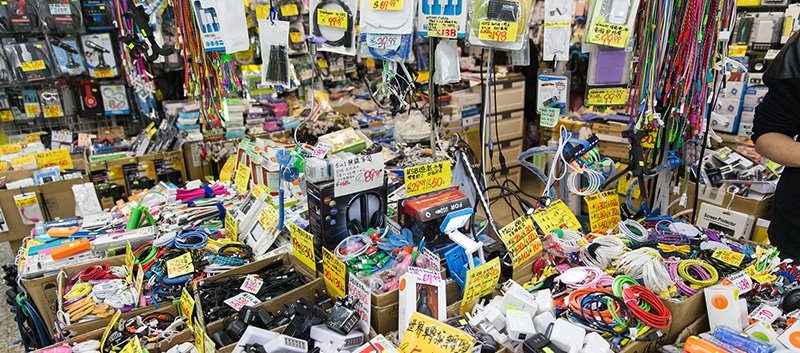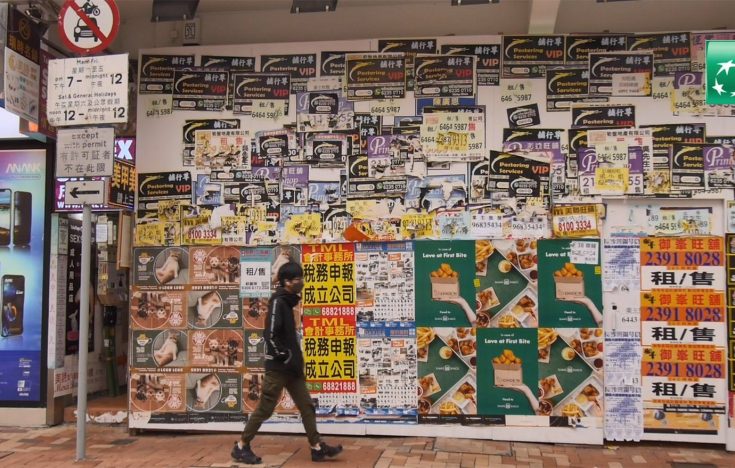As the Covid-19 pandemic shuttered businesses and confined people to their homes in 2020, bricks-and-mortar retail suffered more than most sectors. Traditional shopping will eventually recover in Asia, but the pandemic – and longer term, structural trends – will change the face of prime retail areas like Causeway Bay or Central in Hong Kong, Orchard Road in Singapore or Beijing’s Wangfujing Shopping Street. Expect more consumer technology brands and more mall restaurants in the Asian “high street” of the future.
The face of Asia’s high street is clearly changing. “For Lease” signs and empty shops abound, while storefronts previously occupied by luxury brands have been converted to discount outlets selling masks and medical supplies. Cheap eateries are buzzing, but international clothing stores are deserted by comparison.

Despite the relatively positive economic sentiment in mainland China, retail districts in major Chinese cities show similar signs of stress, as international brands rethink the need for physical locations in this complex market. Zara owner Inditex recently announced that they would withdraw their Bershka, Pull & Bear and Stradivarius brands in China, a total closure of 93 retail outlets.
The reasons for the upheaval across Asia’s shopping meccas can be summed up in two words, explained Wee Liat Lee, Managing Director of Corporate Broking and Sales and property sector expert at BNP Paribas: “Covid-19 and technology”.

The pandemic has supercharged the deepest structural transformation in the commercial real estate market over the last five years: the rise of online shopping. “We are getting more used to technology, and to spending more time in a virtual world,” said Lee. “The lockdowns have demonstrated how much shopping can be done online, including groceries.”

Mainland shoppers lead the trend
In mainland China, 30% of retail sales are now completed online – a record high – and the trend seems to be accelerating, with positive implications for logistics and warehouse storage businesses. And, for obvious reasons, mainland Chinese consumers are no longer travelling for their luxury shopping sprees: in 2019, 32% of luxury goods shopping took place in China; by 2020, the proportion was 73%. China’s luxury market grew 50% in 2020 alone.
While online sales will continue to grow, traditional luxury stores will remain popular with increasingly affluent Chinese consumers, said Lee, pointing to a new high-profile frontage construction project for Hermes in Hong Kong that mirrors its prominent purpose-built waterfront property in Singapore’s Marina Bay precinct.
Landlords show patience
Landlords in Asia’s retail hubs charge their tenants some of the most expensive rentals in the world, with Causeway Bay landlords charging $2,745 per square foot per year, pipping Fifth Avenue in New York City and the Avenue des Champs-Élysées in Paris by a tidy margin, a 2019 report from Cushman and Wakefield found.
“Areas like Causeway Bay and Orchard Road see huge footfall, which is why the value of their rentals has gone up tenfold in the last 10 years,” said Lee.
The profile of tenants occupying such sites has also evolved during this period. In Hong Kong, following the 2002-2004 SARS outbreak, greater numbers of mainland shoppers drove growth in the presence of consumer retail brands. Singapore also benefitted from the rise of mainland shoppers, as fast-churn food-and-beverage (F&B) outlets gave way to luxury brands.
“The high-end US fashion brands were too aggressive, over-extended and have had to roll back,” said Lee. “In addition, Covid-19 has created one or two years of uncertainty,” dampening demand for premium space.
But Lee believes that the Asian conglomerates that own prime shopping malls and retail districts are unfazed by the current rash of vacancies. “They have cash reserves – they don’t have to refinance and they are optimistic about tenants coming back. They can afford to wait.”
The Apple factor
Only highly profitable consumer technology brands like Apple will be able to afford the prime location spaces which they use as a marketing tool.
Indeed, statement locations are not expected to recoup their high rentals through store sales alone. Rather, they signify the brand’s premium credentials in much the same way as advertising in glossy publications or sponsoring exclusive sporting events. “These brands’ earnings are so huge that the rental isn’t an issue compared to the cost of advertising,” explained Lee.
“Consumer technology brands want to have impressive offline premises to demonstrate their presence and prestige,” said Lee. “In the future, the most successful retail business is going to be an online-offline mix.”
At the mall
With the return of consumer spending, prime shopping malls will undergo further changes to their tenant mix, says Lee. “Until recently, about 10% of mall space in Hong Kong was taken up by restaurants and entertainment. Now this proportion is 30-40%, providing facilities for people to get together and generate footfall.” This trend is echoed in Singapore too, as more F&B tenants set up shop on Orchard Road.
The portfolio shuffle
Commercial real estate portfolios will undergo some changes in composition as investors jockey for position in anticipation of recovery. “Smaller landlords have been picking up shops,” Lee said. “Family offices have been paying very high prices to enter the commercial landlord market, attracted by its long-term growth and dividend returns.”

On the other hand, the larger landlords may start to diversify their holdings by investing in less prime locations. Their strong financial positions will keep them on top as the sector expands. “The big will get bigger in this consolidation scenario,” he predicted.
In Asia’s glitzy high-end retail world, structural trends may drive changes in tenants, but the appeal of high-density locations with abundant consumer traffic will remain resilient. The premier shopping areas in Asia promise to bounce back from the Covid-19 pandemic with new tenants whose increasingly digital business models still require real shops.

